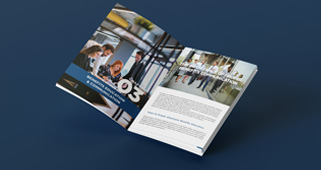In today’s competitive business landscape, attracting and retaining top talent is more critical than ever. One of the key strategies companies employ to achieve this is offering a robust group benefits package. Chief Financial Officers (CFOs) play a pivotal role in designing, selecting, and managing these benefits, balancing the need to provide attractive options for employees with the financial health of the organization. This blog explores what CFOs look for when it comes to group benefits, delving into considerations such as cost management, employee needs, compliance, and the overall impact on the company’s strategic goals.
Understanding Group Benefits
Group benefits encompass a wide range of offerings that go beyond basic salaries to provide additional value to employees. These typically include health insurance, retirement plans, life and disability insurance, wellness programs, and various other perks. The goal is to enhance the overall compensation package, thereby improving job satisfaction, productivity, and loyalty among employees.
The CFO’s Role in Group Benefits
The CFO’s role in group benefits is multifaceted, involving financial analysis, strategic planning, and collaboration with HR and other departments. CFOs are responsible for ensuring that the benefits package is financially sustainable, aligns with the company’s long-term goals, and complies with regulatory requirements.
Key Considerations for CFOs When Evaluating Group Benefits
1. Cost Management
One of the primary concerns for CFOs is managing the cost of group benefits. This involves evaluating the direct costs (premiums, contributions, administrative fees) and indirect costs (such as the impact on productivity and employee turnover). CFOs aim to achieve a balance between offering competitive benefits and maintaining financial prudence.
- Budgeting and Forecasting: CFOs need to accurately forecast the costs of benefits over the short and long term. This includes considering trends in healthcare costs, demographic changes in the workforce, and potential changes in legislation.
- Cost-Benefit Analysis: Evaluating the return on investment (ROI) of different benefits is crucial. CFOs analyze which benefits yield the highest employee satisfaction and productivity relative to their cost.
2. Employee Needs and Preferences
Understanding what employees value is essential for designing an effective benefits package. CFOs often collaborate with HR to gather data on employee preferences through surveys, focus groups, and industry benchmarks.
- Diverse Workforce Considerations: Different employee demographics may have varying needs. For example, younger employees might prioritize student loan repayment programs, while older employees might value retirement planning and healthcare.
- Customization and Flexibility: Offering a range of options that employees can customize to fit their personal circumstances can increase the perceived value of the benefits package.
3. Competitive Benchmarking
To attract and retain talent, companies must offer benefits that are competitive within their industry and region. CFOs need to benchmark their benefits against those offered by similar organizations.
- Market Analysis: Regularly reviewing industry reports and surveys helps CFOs stay informed about current trends and standards in group benefits.
- Adjusting Offerings: Based on this analysis, CFOs might need to adjust their benefits package to remain competitive, whether by adding new benefits or enhancing existing ones.
4. Compliance and Legal Considerations
Compliance with federal, state, and local regulations is a critical aspect of managing group benefits. CFOs must ensure that the benefits offered comply with laws such as the Affordable Care Act (ACA), ERISA, and other relevant regulations.
- Regulatory Updates: Staying up-to-date with regulatory changes is essential to avoid penalties and legal issues.
- Documentation and Reporting: Proper documentation and timely reporting are necessary to maintain compliance and transparency.
5. Risk Management
Group benefits can expose a company to various risks, including financial, operational, and reputational risks. CFOs play a key role in identifying and mitigating these risks.
- Insurance and Reinsurance: CFOs evaluate the need for insurance and reinsurance to manage the financial risk associated with high-cost claims.
- Vendor Management: Selecting reliable and reputable vendors for insurance and benefits administration is crucial to ensure quality and mitigate operational risks.
6. Integration with Overall Business Strategy
The group benefits package should align with the company’s broader business strategy and goals. CFOs need to ensure that the benefits support the organization’s mission, values, and long-term objectives.
- Talent Acquisition and Retention: Benefits should be designed to attract and retain the talent necessary to achieve strategic goals.
- Corporate Culture: The benefits package should reflect and reinforce the company’s culture and values, promoting a positive and productive work environment.
Key Components of an Attractive Group Benefits Package
1. Health Insurance
Health insurance is often the cornerstone of a group benefits package. CFOs must balance comprehensive coverage with cost-effectiveness.
- Plan Options: Offering multiple plan options (e.g., PPOs, HMOs, HSAs) allows employees to choose the coverage that best fits their needs.
- Cost Sharing: Strategies for managing costs might include higher deductibles, co-pays, or premium contributions from employees.
2. Retirement Plans
Retirement benefits are crucial for long-term employee satisfaction and financial security.
- 401(k) Plans: Matching contributions and a range of investment options can make 401(k) plans attractive.
- Pension Plans: For companies that offer pension plans, managing the long-term liabilities and funding status is a critical task for CFOs.
3. Life and Disability Insurance
Life and disability insurance provide financial security for employees and their families in case of unforeseen events.
- Coverage Levels: Offering basic coverage with options for employees to purchase additional coverage provides flexibility.
- Integration with Other Benefits: Coordinating these benefits with other offerings, such as health insurance and wellness programs, can enhance their value.
4. Wellness Programs
Wellness programs can improve employee health and reduce healthcare costs in the long run.
- Preventive Care: Programs that promote preventive care, such as regular health screenings and vaccinations, can help manage long-term health costs.
- Lifestyle Programs: Initiatives like fitness challenges, smoking cessation programs, and mental health support can improve overall employee well-being.
5. Work-Life Balance Benefits
Benefits that support work-life balance are increasingly important for attracting and retaining talent.
- Flexible Work Arrangements: Options such as remote work, flexible hours, and compressed workweeks can improve employee satisfaction and productivity.
- Paid Time Off: Generous vacation policies, parental leave, and sick leave are crucial for maintaining a healthy work-life balance.
Trends in Group Benefits
The landscape of group benefits is continually evolving. CFOs must stay abreast of emerging trends to ensure their benefits packages remain competitive and relevant.
1. Personalization and Flexibility
Employees increasingly expect personalized benefits that they can tailor to their individual needs. This trend requires CFOs to offer a range of options and flexible plans.
- Cafeteria Plans: Allowing employees to choose from a menu of benefits options can increase satisfaction and perceived value.
- Voluntary Benefits: Offering additional voluntary benefits, such as pet insurance or financial planning services, provides more customization.
2. Mental Health and Well-being
The importance of mental health has gained significant recognition, leading to increased demand for mental health benefits.
- Employee Assistance Programs (EAPs): Providing access to counseling and support services can help employees manage stress and mental health issues.
- Mental Health Days: Allowing employees to take mental health days can promote well-being and prevent burnout.
3. Financial Wellness
Financial stress can impact employee productivity and satisfaction. Offering benefits that support financial wellness is becoming a priority.
- Student Loan Repayment Programs: Assisting employees with student loan repayment can be a valuable perk for younger workers.
- Financial Education: Providing resources and workshops on financial planning, budgeting, and investment can enhance overall financial well-being.
4. Technology Integration
Leveraging technology to manage and deliver benefits can improve efficiency and employee engagement.
- Benefits Administration Platforms: These platforms streamline the enrollment and management process, providing employees with easy access to their benefits information.
- Mobile Apps: Mobile-friendly solutions allow employees to manage their benefits on the go, increasing engagement and satisfaction.
Case Studies: Successful Group Benefits Strategies
Case Study 1: Tech Company with a Focus on Employee Wellness
A mid-sized tech company implemented a comprehensive wellness program as part of its group benefits package. The program included:
- Onsite Fitness Center: An onsite gym with fitness classes and personal training.
- Health Screenings: Regular health screenings and flu vaccinations.
- Mental Health Support: Access to counseling services and mental health days.
Results:
- Increased employee satisfaction and retention.
- Reduced healthcare costs due to improved employee health.
- Higher productivity and lower absenteeism.
Case Study 2: Financial Firm Offering Customized Benefits
A financial firm with a diverse workforce introduced a flexible benefits program, allowing employees to choose from a range of options, including health insurance, retirement plans, and lifestyle benefits.
- Cafeteria Plan: Employees could allocate a set amount of benefit dollars to the options they valued most.
- Voluntary Benefits: Additional options such as pet insurance, legal services, and identity theft protection.
Results:
- Higher employee engagement and satisfaction due to personalized benefits.
- Improved talent attraction and retention, particularly among younger employees.
- Enhanced perception of the company as an employer of choice.
Challenges in Managing Group Benefits
Despite the many advantages of offering comprehensive group benefits, CFOs face several challenges in managing these programs.
1. Rising Healthcare Costs
Healthcare costs continue to rise, posing a significant challenge for CFOs trying to manage budgets.
- Cost Containment Strategies: Implementing wellness programs, negotiating with providers, and promoting preventive care can help manage costs.
- Consumer-Driven Health Plans: Encouraging employees to participate in high-deductible health plans (HDHPs) paired with Health Savings Accounts (HSAs) can reduce costs.
2. Compliance Complexities
Navigating the complex regulatory environment is a constant challenge for CFOs.
- Staying Informed: Keeping up with regulatory changes and ensuring compliance requires continuous effort and expertise.
- Audit and Reporting Requirements: Meeting documentation and reporting requirements can be time-consuming and requires meticulous attention to detail.
3. Balancing Cost and Value
Finding the right balance between cost and value is crucial but challenging.
- Employee Feedback: Regularly gathering employee feedback can help ensure the benefits offered are valued and meet their needs.
- Data-Driven Decisions: Using data and analytics to inform decisions can help optimize the benefits package.
4. Integration with Company Culture
Ensuring that the benefits package aligns with and supports the company culture is essential.
- Consistency with Values: Benefits should reflect the company’s mission, values, and goals.
- Engagement and Communication: Effective communication and engagement strategies are necessary to ensure employees understand and appreciate the benefits offered.
Future Directions for Group Benefits
As the workforce continues to evolve, so too will the landscape of group benefits. CFOs must stay ahead of these changes to ensure their benefits packages remain competitive and effective.
1. Increased Focus on Holistic Well-being
The concept of employee well-being is expanding to encompass physical, mental, and financial health. Future benefits packages are likely to offer more comprehensive support for all aspects of well-being.
2. Greater Use of Technology
Technology will continue to play a crucial role in benefits administration and delivery. Innovations such as artificial intelligence (AI) and machine learning can provide personalized recommendations and enhance the employee experience.
3. Emphasis on Diversity and Inclusion
Benefits packages will increasingly need to reflect and support a diverse and inclusive workforce. This might include offering benefits that cater to different cultural, generational, and demographic needs.
4. Sustainability and Corporate Social Responsibility
As companies place greater emphasis on sustainability and corporate social responsibility (CSR), group benefits packages may incorporate elements that support these goals, such as benefits related to environmental sustainability and community involvement.
Conclusion
For CFOs, managing group benefits is a complex but crucial task that requires balancing cost management, employee needs, compliance, and strategic alignment. By offering a competitive and comprehensive benefits package, companies can attract and retain top talent, enhance employee satisfaction and productivity, and ultimately achieve their long-term business goals.
The evolving landscape of group benefits presents both challenges and opportunities. By staying informed about emerging trends, leveraging technology, and focusing on holistic well-being, CFOs can ensure their benefits packages remain competitive and effective in meeting the needs of their workforce.
In the end, a well-designed group benefits package is not just an expense but an investment in the company’s most valuable asset: its people. By making strategic decisions that align with both financial goals and employee needs, CFOs can drive the success and sustainability of their organizations.






